Ashland in southern Oregon looks like a set designer sketched it, then nature filled in the detail.
Historic storefronts meet leafy corridors, with mountain horizons framing every block.
What makes these streets feel so cinematic is not just beauty, it is how history, art, and daily life keep reshaping the view.
Here’s why this Oregon city might just claim the nation’s most photogenic strolls.
Plaza to Park: The Downtown Spine
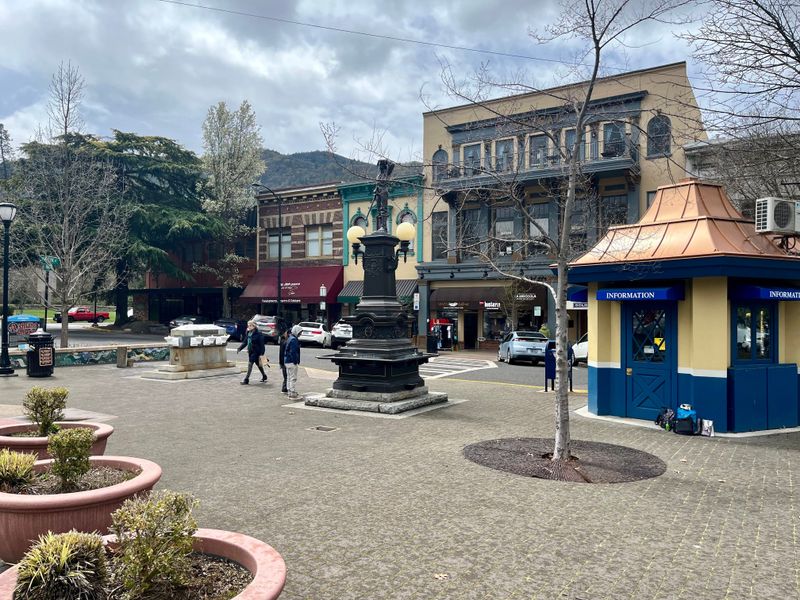
Start at the Ashland Plaza, then wander toward Lithia Park, and the town reveals its rhythm one façade at a time. Brick storefronts catch soft morning light, while Ashland Creek murmurs nearby, guiding you under maples and oaks. The shift from civic square to forested parkland feels seamless, like two scenes blended in a single shot.
Along this spine, window displays show ceramics, books, and handmade goods that reflect the city’s creative streak. Sidewalk planters brighten the edges, and benches invite short pauses between tiny galleries. The whole route rewards slow pacing and a curious eye.
Lithia Park’s gateway sits just steps from the Plaza, which keeps nature within easy reach of shops and theaters. Paths loop past lawns, ponds, and a carefully restored Japanese garden. The result is a street experience that transitions into landscape without missing a beat.
On weekends, buskers sometimes add gentle notes to the scene, never drowning out creek sounds. Families drift between swings and store entrances, creating a lively but unhurried flow. It is the kind of place where an errand effortlessly becomes a scenic walk.
Railroad District Time Capsule

Follow the tracks to the Railroad District and architecture begins telling stories. Restored cottages and historic commercial buildings line narrow streets, their porches and bay windows framing flower beds. The feeling is residential calm with a hint of industry, preserved rather than staged.
Interpretive signs and walking routes describe the era when trains shaped local commerce. Today, studios and small shops occupy former service structures, keeping the district active and human-scaled. The mix is authentic, not nostalgic, and it rewards close inspection.
Side streets hold shade from mature trees that arch over sidewalks. Peek through picket fences and you will see vegetable patches and bikes, proof that these houses remain lived in. The neighborhood invites respect, quiet voices, and slow steps.
Color palettes vary from sage to soft gold, which photographs beautifully in afternoon light. Utility lines, rails, and wooden siding add texture without cluttering the view. It is a street scene where history shows up in details rather than monuments.
Oregon Shakespeare Festival Streetscape
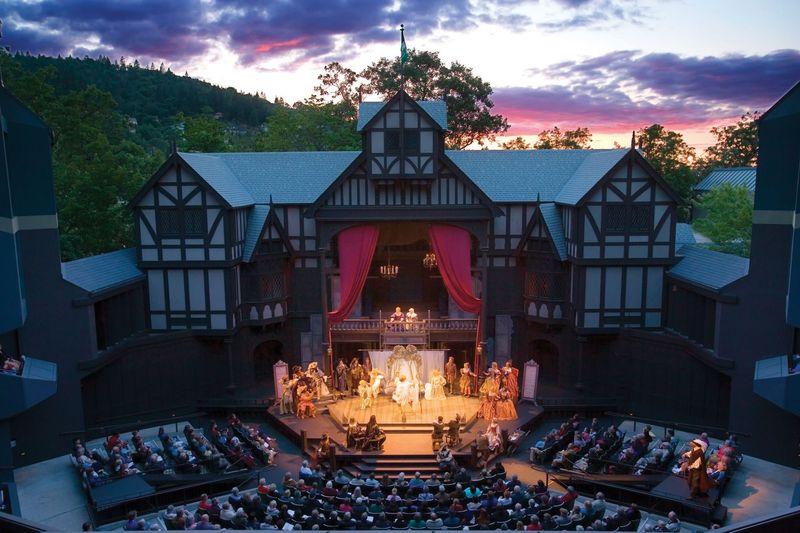
Near the Oregon Shakespeare Festival, theater spaces reshape the street into a cultural courtyard. The Allen Elizabethan Theatre and the Angus Bowmer Theatre sit close to shops and green space, so ticket lines and strolling audiences animate the sidewalks. Even without a performance, the architecture hints at storytelling.
Outdoor seating clusters provide comfortable perches for pre-show conversation. The streets are tidy, wayfinding is clear, and box office windows feel integrated into the flow. The design balances anticipation with ease.
During season, banners and posters refresh the corridors with new colors. Visitors move between plazas and shaded alleys, where the creek can be heard if you pause. The experience borders on festive, yet remains grounded by the town’s modest scale.
At twilight, subtle lighting warms facades and entryways. The theaters become glowing anchors that complement surrounding storefronts rather than overshadow them. It is a model of how culture can brighten a downtown block by block.
Lithia Park’s Edge Streets
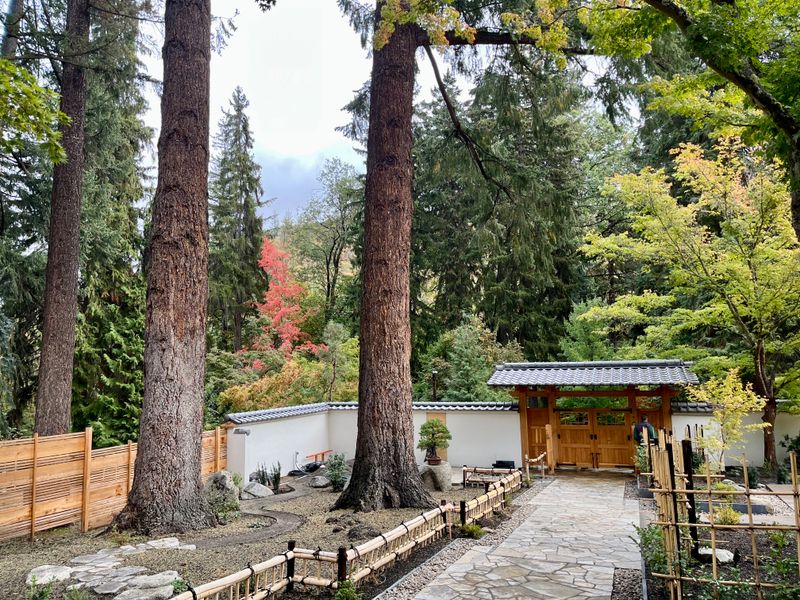
Streets that trace the perimeter of Lithia Park blur the line between town and woodland. One moment you are beside a shop window, the next you are under towering trees listening to birds. The creek’s sound draws you down side paths and back again.
Park-side benches offer framed views of bridges and lawns. Seasonal color shifts are dramatic, from petal-heavy spring to bright fall canopies. Each change writes a new version of the same street.
Walkers share space with joggers and families heading to the playground. Crosswalks are frequent and well marked, which keeps the experience relaxed. Everyday errands feel like mini excursions because the scenery does the heavy lifting.
Look for the Japanese garden entrance, carefully restored with serene pathways and layered plantings. Just outside, the street stays quiet, as if echoing the garden’s calm. It is an elegant threshold between landscaped art and lived-in city.
Murals by the Creek: Las Calles de Guanajuato
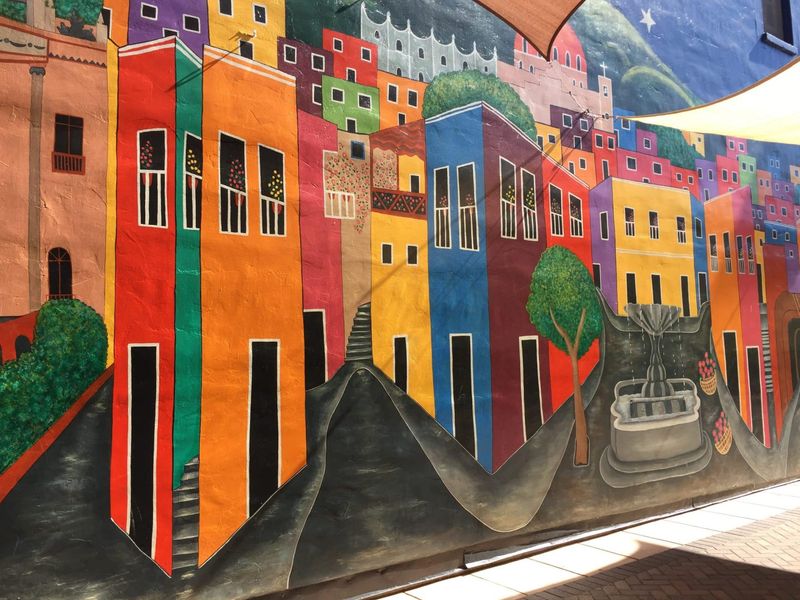
Along Ashland Creek, color splashes across walls in tribute to the sister city connection with Guanajuato. The mural known as Las Calles de Guanajuato folds steep alleys, arches, and festive hues into the local landscape. It feels like a postcard tucked into a riverside lane.
The path here is walkable and shady, with handrails and overlooks that encourage lingering. Painters captured lively angles that brighten even overcast days. The water’s motion provides a natural soundtrack.
Nearby patios and seating areas support quiet conversation. Street lighting is gentle, which keeps the artwork readable at dusk. The setting turns a simple stroll into a small gallery experience.
Photographers appreciate how murals reflect onto creek eddies. The compositions stay respectful of the surroundings, never overwhelming the vegetation. It is a fusion of public art and riparian calm that feels distinctly Oregon.
Canopy Boulevards and Heritage Trees
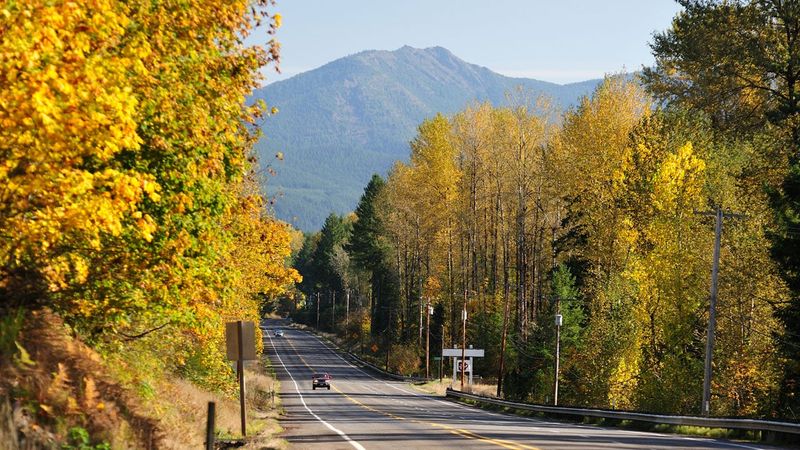
Several Ashland boulevards read like arboretums, with heritage trees arching over pavement. Sunlight filters through layered leaves, turning ordinary intersections into dappled rooms. In summer, the shade cools every step.
Street names change, but the feeling stays consistent, a green tunnel that softens traffic and frames mountain views. Sidewalk cracks host tiny plants, a sign of long-settled roots. The city’s care shows in trimming, spacing, and the steady rhythm of plantings.
Morning walkers get birdsong and cool air, while evenings bring gold light along trunks and branches. Benches appear at steady intervals, practical yet handsome. The canopy invites neighbors outside, which quietly builds community.
After a rain, leaves shine and the streets smell like cedar and soil. Puddles mirror the crowns above, doubling the effect. It is simple infrastructure, yet it delivers daily beauty in a way that feels rare.
Siskiyou Mountain Backdrops at Golden Hour
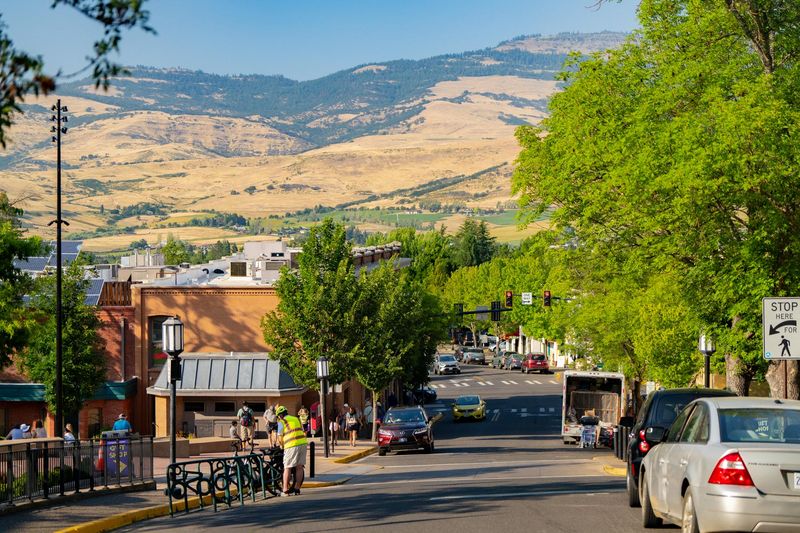
As the sun tilts, the Siskiyou Mountains pull the streets into a wider scene. Peaks silhouette behind rooftops, giving even quiet blocks a cinematic finish. The effect is strongest on clear evenings when the sky softens to pastels.
Photographers like to stand mid-block and let the horizon anchor the frame. Rooflines, signs, and street lamps form a tidy foreground. It turns casual snapshots into postcards.
This backdrop is not static, clouds move and the color shifts quickly. Side streets offer slightly different angles, each with its own mood. You can chase light across a few blocks and feel like you covered real ground.
Residents often pause on corners just to take it in. The mountains remind you that this is Oregon, where nature sets the context for every errand. It is a daily show that asks only a minute of attention.
Victorian Pickets and Porch Culture

In older neighborhoods, porches treat the street like a shared living room. Painted trim and careful carpentry frame rocking chairs and planters, a quiet dialogue between house and sidewalk. The geometry is tidy, yet softened by lavender and roses.
Walkers get nods from residents reading or watering. Fences stay low, which keeps the conversation open. The design encourages eye contact without intruding on privacy.
Each block carries its own pattern of gables, dormers, and railings. Colors lean toward earth tones with occasional cheerful contrasts. It is harmonious without feeling uniform.
Even small details matter, like turned balusters and transom windows. In the evening, warm porch lights make the street feel welcoming. This kind of everyday hospitality is a hallmark of Ashland, Oregon, and it photographs as well as it lives.
Walkability That Invites Serendipity
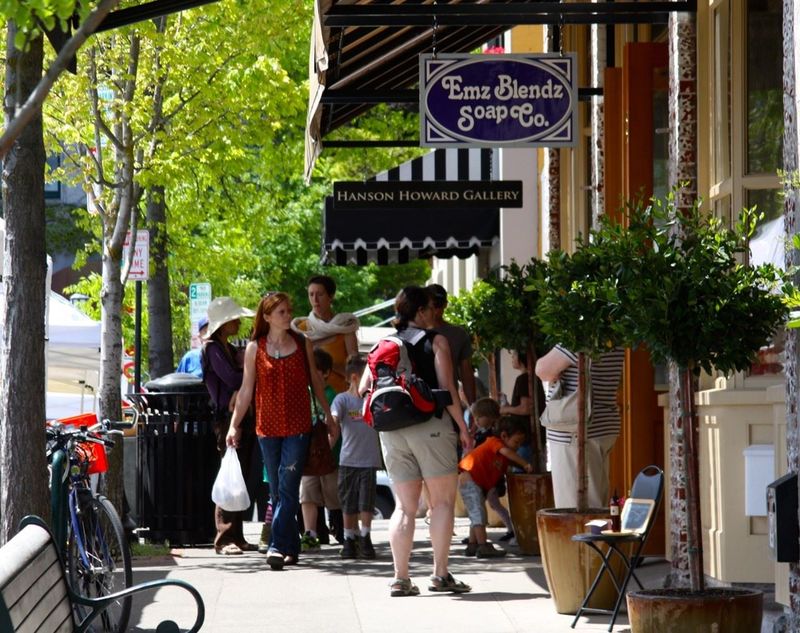
Ashland’s compact grid makes wandering feel safe and intuitive. Crosswalks, curb ramps, and clear sightlines keep the pace relaxed. You can stitch together shops, parks, and theaters without checking a map.
Public seating appears right when you need it. Shade arrives when the day warms, and storefront awnings fill the gaps. Side alleys sometimes open to tiny courtyards where water features soften city noise.
The result is an easy rhythm that rewards curiosity. People discover small galleries or pocket gardens merely by turning a corner. That sense of chance contributes to the city’s charm.
Wayfinding signs are modest but helpful, so visitors do not feel lost. The town’s scale encourages conversation with locals, who often share directions and tips. In Oregon travel, this kind of human-friendly street design is gold.
Festivals That Animate the Blocks

Street life peaks during community events, when music and art spill into public space. Without overwhelming the city, these gatherings bring color, costumes, and smiles to familiar corners. The layout handles the energy with plenty of breathing room.
Sidewalks stay passable thanks to thoughtful placement of stages and booths. People drift between performances and quiet park edges, which keeps the mood balanced. Families, students, and travelers share the same easy circuit.
Signs make navigation simple, and cleanup is swift, so the streets bounce back quickly. Decorative lights and banners shift the palette without masking the architecture. It is celebration that respects the setting.
The festival calendar changes across the year, giving repeat visits a fresh feel. Even on non-event days, you can sense that the streets know how to host. This is Oregon hospitality expressed at city scale, block by block.
Dear Reader: This page may contain affiliate links which may earn a commission if you click through and make a purchase. Our independent journalism is not influenced by any advertiser or commercial initiative unless it is clearly marked as sponsored content. As travel products change, please be sure to reconfirm all details and stay up to date with current events to ensure a safe and successful trip.